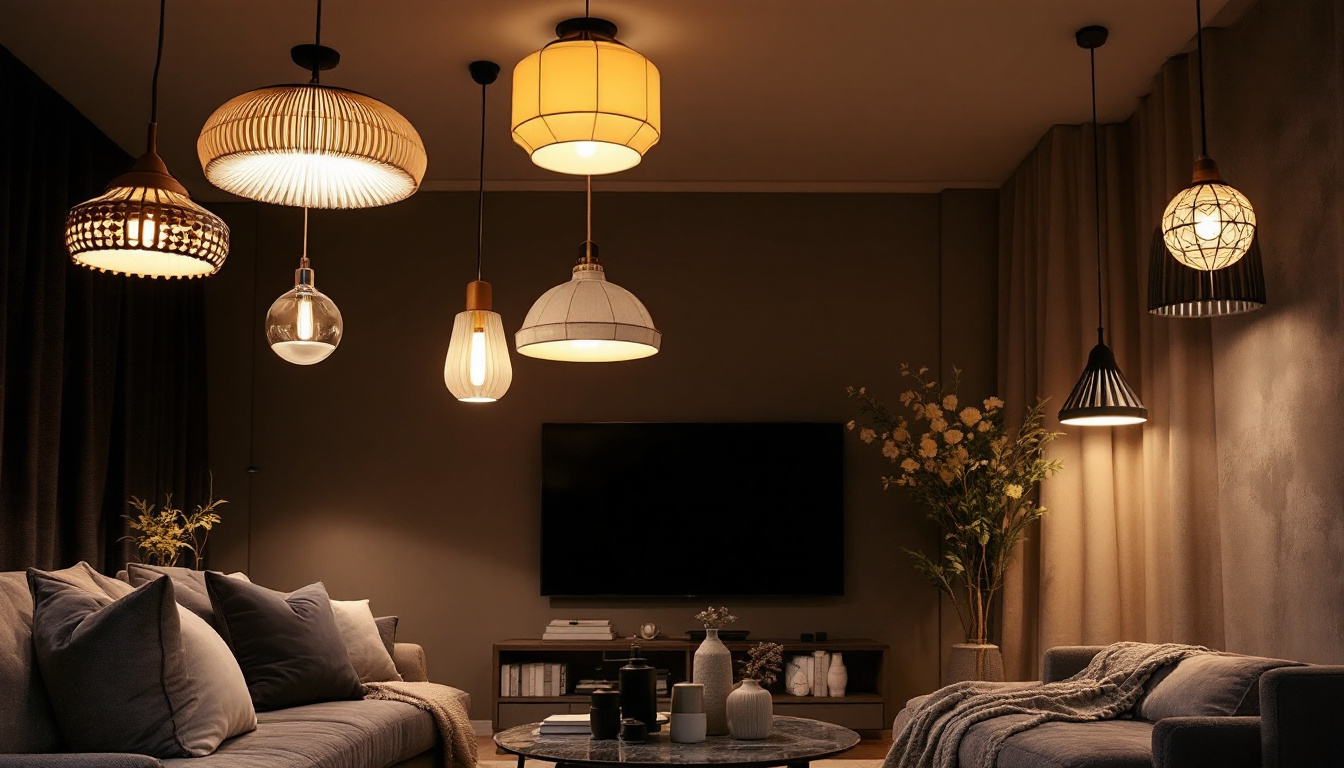
In the world of lighting design, the importance of outlet power cannot be overstated. For lighting contractors, understanding the intricacies of electrical outlets and their capabilities is crucial for creating effective and aesthetically pleasing lighting solutions. This article delves into the significance of outlet power in lighting design, exploring how it influences the overall effectiveness and efficiency of lighting systems.
Outlet power refers to the electrical capacity that outlets can provide to connected devices, including lighting fixtures. It is essential for contractors to grasp the fundamentals of how outlet power works, as it directly impacts the performance of lighting designs. Understanding the nuances of outlet power not only aids in the installation process but also enhances the longevity and efficiency of lighting systems, ultimately leading to greater customer satisfaction.
At the core of outlet power are two critical components: voltage and amperage. Voltage is the measure of electrical potential, while amperage indicates the flow of electricity. For most residential and commercial lighting applications, standard outlets provide 120 volts and can handle varying amperage levels depending on the circuit design. In some cases, specialized outlets may provide 240 volts for high-powered equipment, which is crucial for certain types of lighting setups that require more energy.
Lighting contractors must ensure that the fixtures they install are compatible with the available voltage and amperage. Overloading an outlet can lead to circuit failures or even fire hazards, making it imperative to adhere to electrical codes and standards. Additionally, understanding the relationship between voltage and amperage is vital; for instance, a higher voltage allows for lower amperage to achieve the same power output, which can reduce the risk of overheating in wiring and improve overall system efficiency.
There are various types of outlets used in lighting designs, each serving different purposes. Standard duplex outlets are commonly used in residential settings, while GFCI (Ground Fault Circuit Interrupter) outlets are essential in areas prone to moisture, such as bathrooms and kitchens. These safety features are critical in preventing electrical shock, and their installation is often mandated by local building codes.
For specialized lighting applications, such as track lighting or high-output fixtures, dedicated circuits may be necessary. Understanding the specific requirements of each lighting design will help contractors select the appropriate outlet type, ensuring optimal performance and safety. Furthermore, smart outlets are becoming increasingly popular, allowing for remote control and automation of lighting systems. These outlets can integrate with home automation systems, providing users with the ability to adjust lighting levels and schedules from their smartphones, enhancing both convenience and energy efficiency. As technology continues to evolve, staying informed about the latest outlet types and their applications will be crucial for contractors aiming to meet modern lighting demands.
Outlet power plays a pivotal role in determining the effectiveness of lighting designs. From the brightness and color temperature of fixtures to energy efficiency and overall aesthetics, the power supplied by outlets can significantly influence the outcome of a project.
The brightness of a lighting fixture is often measured in lumens, and the amount of power supplied to the fixture directly affects its output. Contractors must consider the wattage requirements of each fixture and ensure that the outlet can provide sufficient power without exceeding its capacity.
Using fixtures that require more power than the outlet can supply may result in dim lighting or flickering, which can detract from the intended design. Therefore, it is essential to match the fixture’s power requirements with the outlet’s capabilities to achieve the desired brightness. Additionally, the choice of dimming systems can further complicate this balance; some dimmers may not be compatible with certain types of fixtures, leading to performance issues. Understanding the interplay between outlet power, fixture compatibility, and dimming technology is crucial for creating a cohesive lighting experience that meets both functional and aesthetic needs.
In today’s environmentally conscious world, energy efficiency is a top priority for many lighting projects. LED fixtures, for instance, consume significantly less power compared to traditional incandescent bulbs while providing the same or even greater brightness levels.
Contractors should evaluate the outlet power in conjunction with the energy efficiency of the selected fixtures. By opting for energy-efficient lighting solutions, contractors can not only reduce energy consumption but also enhance the longevity of the fixtures, ultimately leading to cost savings for clients. Furthermore, integrating smart lighting technologies can optimize energy use by allowing for automated adjustments based on occupancy or ambient light levels. This not only contributes to sustainability efforts but also elevates the user experience by ensuring that spaces are well-lit when needed and conserving energy when they are not in use. As such, the careful consideration of outlet power in the context of these advanced lighting solutions can lead to innovative designs that are both functional and environmentally friendly.
Modern lighting designs often require flexibility and control, allowing users to adjust lighting levels based on their needs. Outlet power is a critical factor in achieving this level of control, particularly when integrating smart lighting systems.
Smart lighting systems enable users to control their lighting through mobile apps or voice commands, providing convenience and customization. However, these systems often require specific outlet configurations to function optimally.
Contractors should be aware of the power requirements for smart lighting devices, including hubs and controllers, and ensure that the outlets can accommodate these needs. Proper planning can prevent issues related to insufficient power supply, ensuring a seamless user experience.
Dimmer switches are a popular choice for enhancing the ambiance of a space. However, not all dimmers are compatible with every type of lighting fixture. When designing a lighting system that includes dimmers, contractors must consider the outlet power and the fixture’s compatibility with dimming technology.
Using the wrong combination can lead to flickering lights or even damage to the fixtures. Therefore, it is essential to verify that both the outlet and the lighting fixture can support dimming capabilities, ensuring a smooth and enjoyable lighting experience for users.
Safety is paramount in any lighting design project. Understanding outlet power is not only about achieving optimal performance but also about ensuring compliance with electrical codes and safety standards.
Electrical codes vary by region, but they generally outline the requirements for outlet installations, including the number of outlets per circuit and their placement. Contractors must familiarize themselves with local codes to ensure that their lighting designs comply with safety regulations.
Failure to adhere to these codes can result in fines, project delays, or even hazardous conditions. By prioritizing compliance, contractors can deliver safe and reliable lighting solutions that meet the needs of their clients.
Overloading outlets is a common issue that can lead to circuit failures and potential fire hazards. Contractors should calculate the total wattage of all connected fixtures and ensure that it does not exceed the outlet’s capacity.
Implementing proper circuit management strategies, such as distributing fixtures across multiple outlets, can help mitigate the risk of overloading. Additionally, using circuit breakers and surge protectors can provide an extra layer of safety, protecting both the lighting system and the property.
As technology advances, innovative lighting solutions continue to emerge, providing contractors with new opportunities to enhance their designs. Understanding outlet power is essential for integrating these solutions effectively.
With the growing emphasis on sustainability, many contractors are exploring the integration of renewable energy sources, such as solar panels, into their lighting designs. These systems often require specific outlet configurations and power management strategies to function efficiently.
Contractors must assess the outlet power in conjunction with the renewable energy system to ensure that the lighting fixtures receive a stable and adequate power supply. This approach not only supports sustainability efforts but also enhances the overall efficiency of the lighting design.
advanced control systems, such as lighting control panels and automation technologies, are becoming increasingly popular in modern lighting designs. These systems often require dedicated outlets and specific power configurations to operate effectively.
Contractors should consider the power requirements of these advanced systems during the design phase, ensuring that the outlets can support their functionality. By doing so, they can create lighting designs that are not only visually appealing but also technologically advanced and user-friendly.
Outlet power is a fundamental aspect of lighting design that significantly influences the performance, safety, and aesthetics of lighting solutions. For lighting contractors, understanding the intricacies of outlet power is essential for delivering high-quality projects that meet client expectations.
By considering factors such as voltage, amperage, fixture compatibility, and energy efficiency, contractors can create innovative and effective lighting designs. Moreover, prioritizing safety and compliance ensures that these designs are not only beautiful but also reliable and secure.
As the lighting industry continues to evolve, staying informed about outlet power and its implications will empower contractors to push the boundaries of creativity and technology in their work. Ultimately, a thorough understanding of outlet power is the secret to unlocking better lighting designs that enhance the spaces they illuminate.
Ready to elevate your lighting designs with the power of premium, spec-grade products? Look no further than LumenWholesale, where we offer an unbeatable combination of quality and value. Say goodbye to middleman markups and hello to a vast selection of reliable lighting solutions that meet the highest industry standards. With free shipping on bulk orders, you can stock up on all the lighting essentials you need to bring your innovative designs to life. Don’t compromise on performance or price. Discover wholesale lighting at the best value today and brighten your projects with LumenWholesale.

Discover essential tips and insights for lighting contractors to navigate the latest trends while avoiding common pitfalls.

Discover innovative hacks for smart lighting contractors to optimize push light switch installations.

Illuminate your living space with style and functionality.

Discover the essentials of dimming LED lights with our comprehensive checklist tailored for lighting contractors.